|
1861 H. Hernstein & Son,
U.S. Army Hospital Dept. field set
An extremely
rare, 99%
complete, and original H. Hernstein made U. S. Army Hospital Department
marked and specified three tier field surgical set. Typically field
surgical sets would have been issued to the forward operations surgeons as
opposed to those issued for use in the rear area hospitals. This
extensive set contains amputation instruments, as well as urological,
neurosurgical, and heavy bone cutting forceps used to section large leg and
arm bones. Also included are a complete set of ivory handled minor
surgery knives and instruments.
The Medical Department
specified the following list as minimal for a 'Field Operating Case', this
set meets these standards:
The Field
Case contained: 2
amputating knives (one long, one medium), 2 catlings (one long, one
medium), 3 scalpels, 2 bistouries, 1 hernia knife, 1 finger
knife, 1 capital saw (long, bow, two blades), 1 metacarpal saw, 1
Hey's saw, 1 trephine (conical), I bone forceps (broad edged,
slightly curved, spring handle), 1 bone forceps (sequestrum,
spring handle), 1 artery forceps, 1 ball forceps, 1 dressing
forceps, 1 dissection forceps, 1 artery needle, 1 artery needle key,
12 surgeon's needles, I tourniquet screw with pad, 1 tenaculum, 2
scissors, 2 retractors, 1 trocar and canula, 1 raspatory, 1
elevator, 1 brush, 1 bullet probe, 1 director, 6 steel bougies,
silvered, double curve (Nos. 1 and 2, 3 and 4, 5 and 6, 7 and 8, 9
and 10, 11 and 12), 3 silver catheters (Nos. 3, 6, and 9), 6
gum-elastic catheters (Nos. 1, 3, 5, 7, 9, 11), 12 yards suture wire
(iron), ¼ oz. ligature silk, ½ oz. wax, 1 mahogany case (brass
bound, slide catch), 1 leather pinch; pocket case the same as
allowed to staff surgeons.
The ivory handled minor
surgery instruments are a carry over into the Civil War from the late 1850's, but are not
typically seen in later sets during the war when most makers used the
heavier cross-checked ebony handles.
The heavy three layer (16 x 6 3/4 x 4 1/2
in.) mahogany case, purple lined case is
typical military issue with sliding latches and no key lock. The cast
brass corners pieces are there for re-enforcement as is normal for
heavy military issue.
There are three levels of the purple velvet lined case: lid with removable
partition, removable tray, and the lower section for urological and heavy
bone cutting related
instruments.
This is a fine example of
a hardcore military-issued field Civil War surgical set for the U. S. Army
Hospital Department as was issued to regular regimental surgeons.
H. Hernstein & Son, of
New York, was located at 131 and Mercer 393 Broadway, New York city, N.Y.,
during the Civil War, they produced contract ordered surgical sets for the
U. S. Army Medical and Hospital Departments from this
address during the Civil War. Hernstein was a contract maker for this type of field surgery sets from the start and
until the end of the War. The Hernstein & Son mark verifies the set to
have been made during the middle years of the War.
Hermann Hernstein & Son
(Hermann and Albert L. Hernstein) 1862-65: 131 Mercer and 393 Broadway
(Mid-War)
Hermann Hernstein & Son
& Co. 1865: 2 Liberty and
393 Broadway (Post War)
Hermann Hernstein & Co. 1866-67: 2 Liberty and 393 Broadway
Reference:
Edmonson
Click on photos
to enlarge
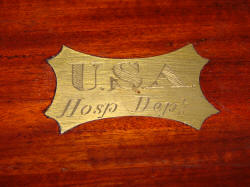
Engraved at the factory: 'United States Army
Hospital Department'
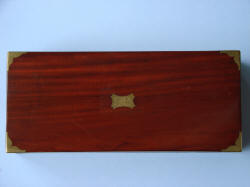
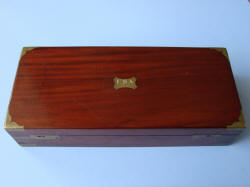
Military sliding latches,
'U. S. Army Hospital Department' engraved
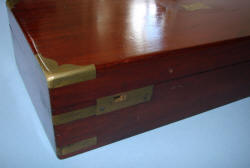

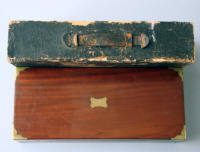
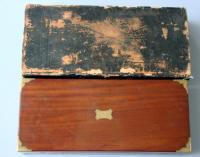
The leather carrying case is in rough shape, but it's
rare to ever find one with a set
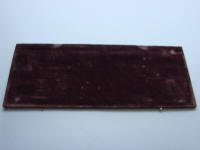
The Hernstein Eagle impression found on later
velvet dividers is not present
at this point

Above: All three levels of the set

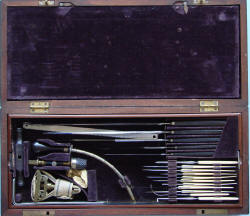
Shown below are all
the contents
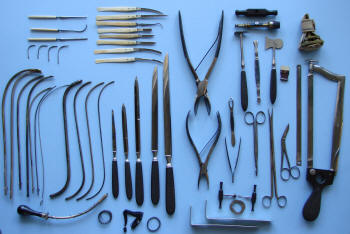
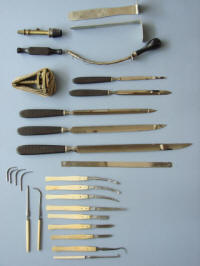
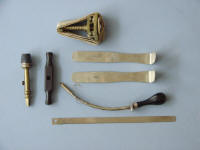
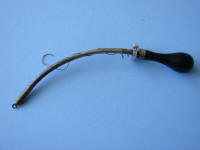

Buck's rectal bladder trocar with protective
cover and thread to hold the cover as a catheter
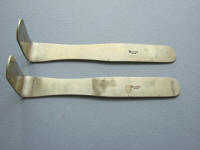
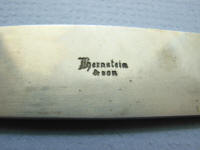
Heavy tissue or muscle retractors

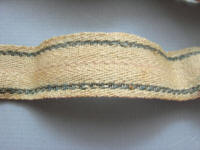
The tourniquet is clearly marked 'Hernstein &
Son'
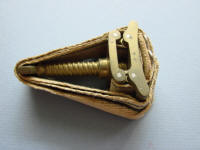
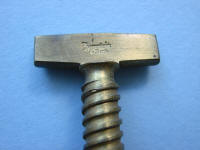
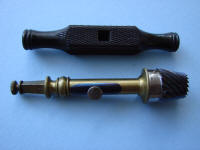
Galt style trephine for neurosurgical trepanning
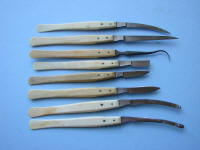

Scalpels, tenaculeum, and
bistouries on the left. On the right is a set of aneurysm needle tips with
ivory handle
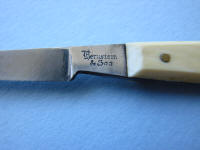
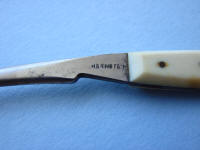
Ivory handled minor surgery instruments are marked both
'Hernstein' and 'Hernstein & Son', which is normal
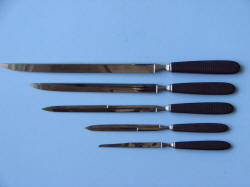
Set of large amputation knives, double sided
cutting catlins, and a
finger or metacarpal saw
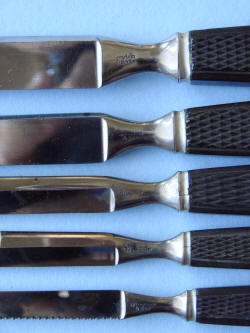
Matching ferrules shows these knives are all
original for this maker
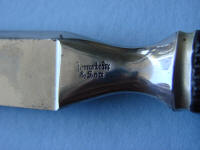
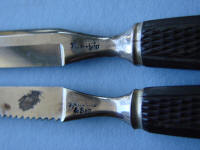
"Hernstein & Son" markings on all the knives
and finger saw
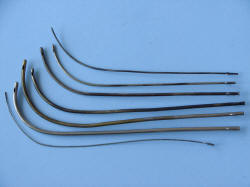
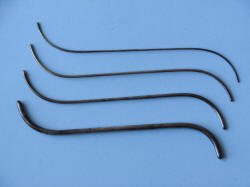
Hollow silver catheters on the left and solid
steel urinary sounds
on the right.
All the silver catheters may not be original
as they are very delicate and would have been constantly
replaced due to collapse and bending or
leaving it tied to a patient who needed the catheter to be left in place.
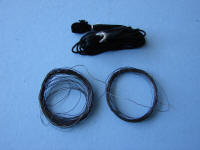
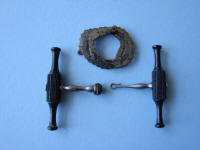
Left: silk suture material and two spools of silver wire
for suturing. On the right is a chain saw for cutting large bones.
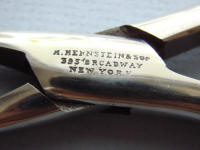
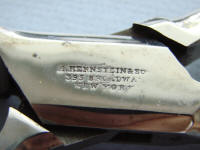
H. Hernstein & Son, 393 S. Broadway address
marked heavy cutting bone forceps
Shown below are the contents of the upper part of the
case under the partition


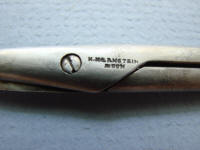
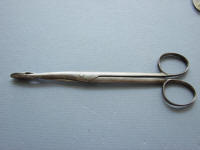
Sequestrum forceps
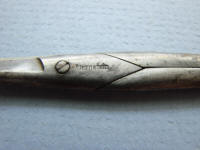
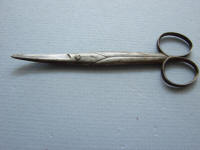
Tissue scissors
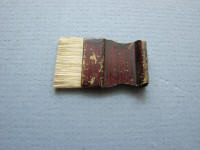
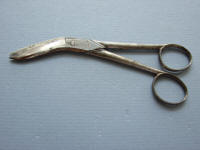
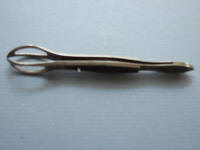
Bone brush
Bandage scissors Olive artery forceps
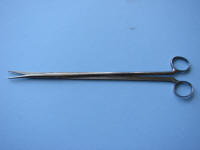
Bullet forceps
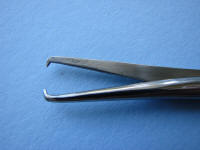
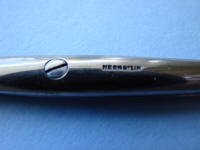

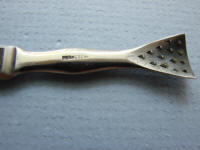
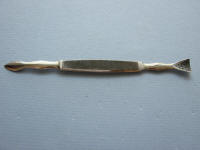
Elevator and rasp for trepanning
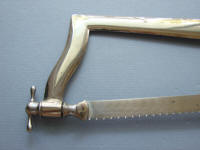
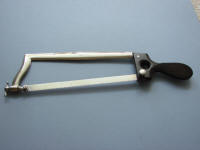
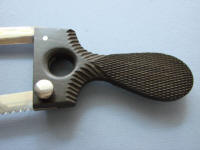
Capital amputation saw with spare blade
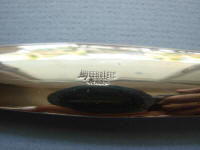
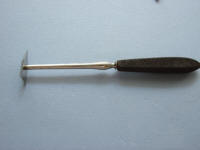

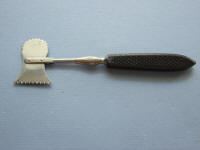
Hey saw for neurosurgery
|
